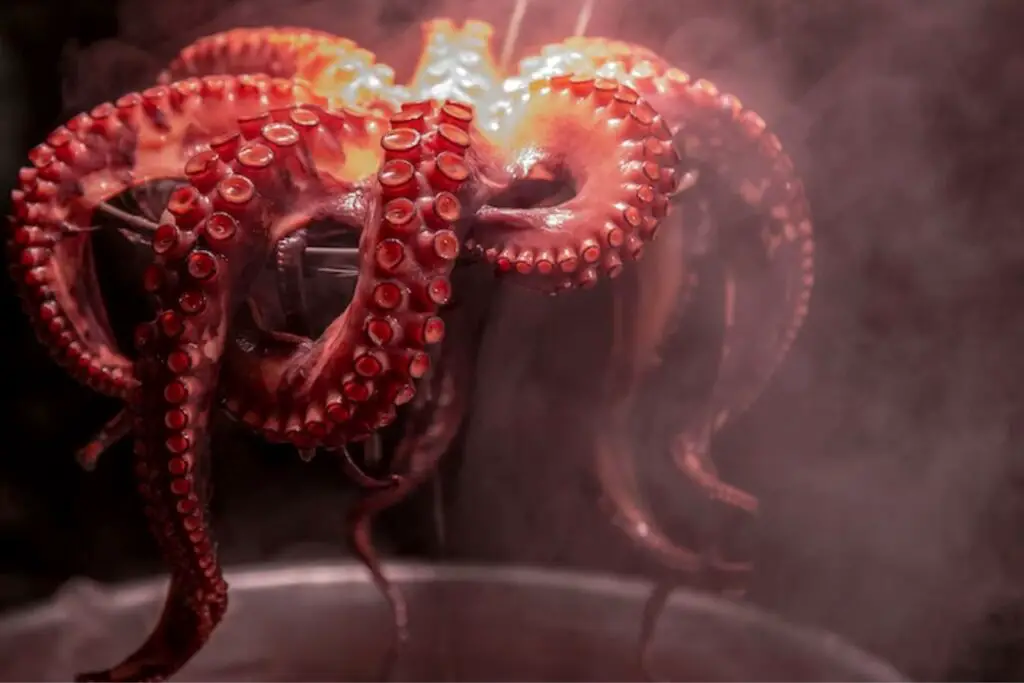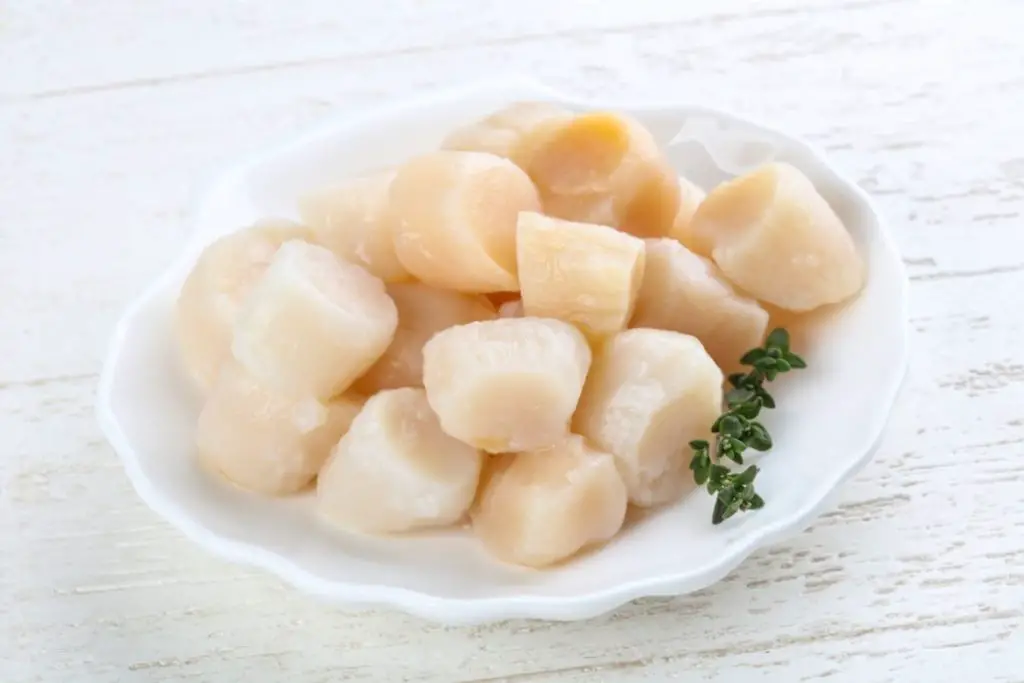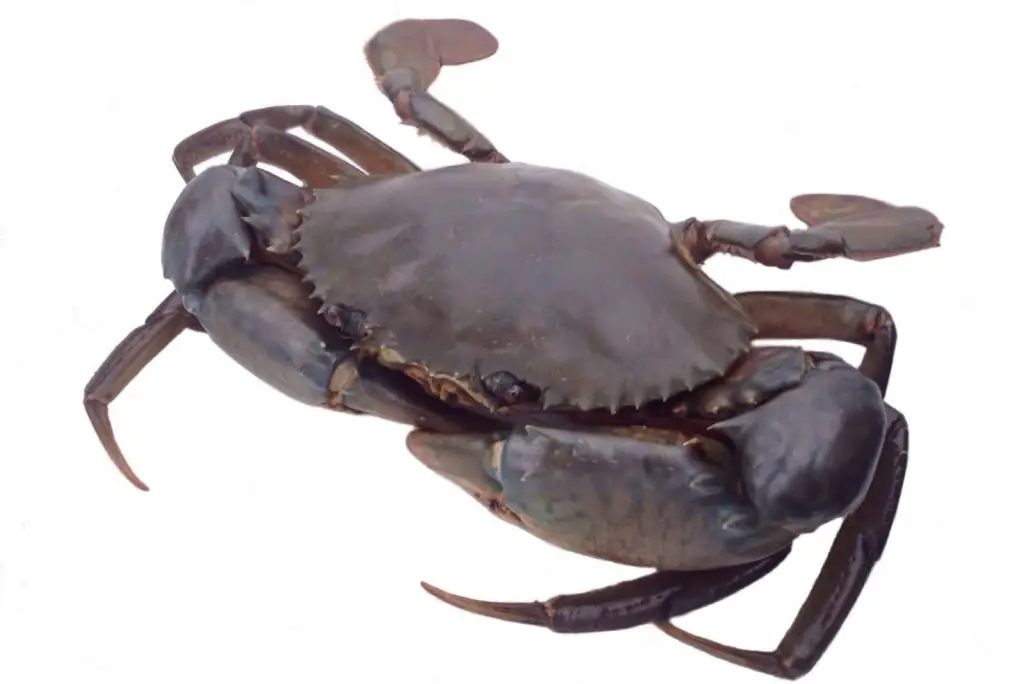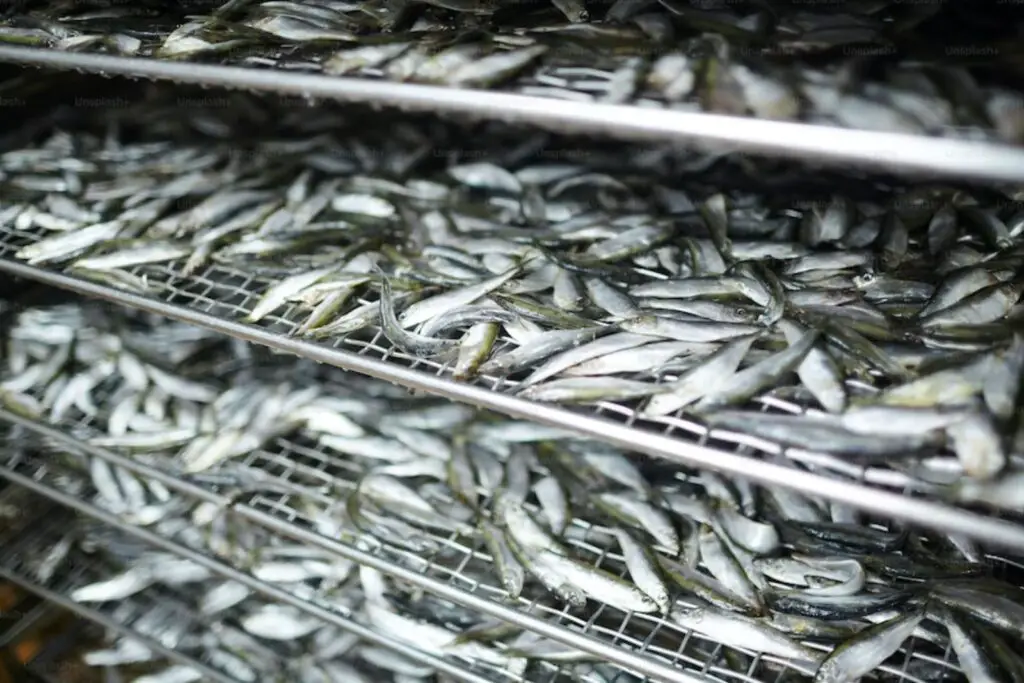
Crabs, with their delicious and delicate meat, are a prized seafood enjoyed by many seafood lovers around the world. Whether you prefer them steamed, boiled, or grilled, crabs offer a unique and savory flavor that is hard to resist. However, if you find yourself with an abundance of crabs or want to save some for later use, freezing can be a convenient option. Freezing crabs allows you to extend their shelf life and preserve their fresh taste, ensuring that you can enjoy their succulent meat at any time. In this guide, we’ll explore the best methods for freezing crabs, whether it’s freezing them whole, as crab meat, or as crab legs, so you can savor the taste of these delectable crustaceans whenever you crave them. Join us as we dive into the world of crabs and discover how freezing can help you enjoy their flavors all year round.
Here are the simple steps to freeze crabs:
Step 1: Select the Right Crabs
When it comes to freezing crabs, the first step is to select the right ones for the process. Choosing live crabs that are healthy, active, and free from any signs of damage or decay is crucial. The quality of the crabs before freezing will greatly impact the taste and texture of the meat once they are thawed.
Freshness is key when it comes to selecting crabs for freezing. If possible, aim for crabs that have been recently caught or purchased from a reputable seafood market. Live crabs are preferred because they ensure the meat is as fresh as possible.
Inspect the crabs carefully before freezing them. Look for crabs that are lively, with legs and claws that move actively. They should have a strong and distinct crabby smell, which indicates their freshness. Avoid crabs that appear lethargic, have damaged shells, or show signs of decay, such as a strong foul odor or discolored meat.
Selecting the right crabs for freezing is important because the quality of the crabs before freezing will directly affect the quality of the meat after thawing. Fresher crabs tend to retain their flavor, texture, and overall quality much better during the freezing process. So, take the time to choose the best live crabs available to ensure a delightful culinary experience when you eventually enjoy the thawed crabs.
Remember, freezing crabs cannot improve the quality of crabs that are already past their prime. It is best to freeze crabs as soon as possible after catching or purchasing them to preserve their freshness.
Step 2: Clean and Prepare the Crabs
Once you have selected the right crabs for freezing, Let’s clean and prepare them before the freezing process. Proper cleaning ensures that the crabs are free from any dirt, sand, or debris that might affect their taste and texture.
To begin, rinse the crabs under cold running water. This helps remove any loose particles on the surface of the shells. Gently rub the crabs with your hands to dislodge any stubborn dirt. For more thorough cleaning, use a brush to scrub the shells, particularly in hard-to-reach areas.
Next, it is important to remove the gills, also known as “dead man’s fingers,” from the crabs. The gills are located on either side of the crab’s body, and they serve as respiratory organs. However, they can impart an unpleasant taste to the meat if not removed. To do this, hold the crab firmly and lift up the triangular-shaped shell, known as the apron, located on the underside of the body. Pull out the gills and discard them.
Additionally, you have the option to break off the claws from the crabs. This step is not necessary, but it can make the freezing and thawing process more convenient, especially if you plan to use the claws separately. To remove the claws, hold the crab’s body with one hand and twist the claws off with a firm, quick motion. Be cautious as the crab’s claws can be sharp and may require some force to detach.
Properly cleaned crabs will ensure that no unwanted flavors or contaminants affect the quality of the meat during freezing and thawing, allowing you to fully enjoy the delicious taste of the crabs once they are cooked.
Step 3: Blanch the Crabs
Blanching the crabs is an essential step in the freezing process as it plays a significant role in preserving the quality of the crab meat. Blanching involves briefly immersing the crabs in boiling water, which helps kill bacteria, maintain the color and texture of the meat, and slow down enzymatic activity that can degrade its quality.
To begin, fill a large pot with water and bring it to a rolling boil. It is important to use enough water to fully submerge the crabs. The boiling water serves as a quick and effective method to eliminate any potential bacteria or microorganisms present on the surface of the crabs.
Carefully add the cleaned crabs to the boiling water. It is advisable to handle them using tongs or a slotted spoon to avoid any burns from the hot water or the crabs’ sharp claws. Ensure that the crabs are fully submerged in the boiling water.
The blanching time will vary depending on the size of the crabs. Generally, blanching for about 3 to 4 minutes is sufficient. However, it is essential to monitor the crabs closely during the blanching process to prevent overcooking. Overcooking can lead to a loss of texture and flavor in the crab meat.
Blanching serves several purposes in freezing crabs. Firstly, it helps kill any bacteria or microorganisms present on the crabs, reducing the risk of foodborne illnesses. Additionally, blanching preserves the natural color of the crab meat, preventing it from turning dull or discolored during freezing. It also helps maintain the texture of the meat, preventing it from becoming mushy or grainy.
Furthermore, blanching slows down enzymatic activity in the crabs. Enzymes naturally present in the meat can cause the breakdown of proteins and fats, leading to a deterioration in taste and texture. By blanching the crabs, enzymatic activity is slowed down, preserving the quality of the meat for a longer duration.
Blanching is a crucial step that ensures the safety and quality of the crab meat during freezing, allowing you to enjoy the best possible flavor and texture when you eventually thaw and cook the crabs.
Step 4: Cool and Prepare to Freeze
After blanching the crabs, It’s time to cool them down and prepare them for the freezing process. Proper cooling is crucial to halt the cooking process and prevent the crabs from overcooking.
To cool the crabs, immediately transfer them from the pot of boiling water to an ice bath. An ice bath is a container filled with ice and water. Submerging the crabs in the ice bath rapidly lowers their temperature, effectively stopping the cooking process.
Allow the crabs to cool in the ice bath for about 5 minutes. It is important to ensure that the crabs are completely submerged in the ice water to ensure even cooling. This helps preserve the texture and flavor of the meat, preventing it from becoming overcooked or mushy.
Once the crabs have cooled down, remove them from the ice bath. Before freezing, it is important to remove any excess moisture from the crabs. Use paper towels to pat the crabs dry gently. Removing excess moisture is crucial to prevent the formation of ice crystals, which can lead to freezer burn and affect the quality of the meat.
Take care while patting the crabs dry, as they can be delicate and easily break apart. Ensure that all parts of the crabs, including the shells and crevices, are thoroughly dried.
By properly cooling and drying the crabs, you ensure that they are ready for the freezing process. Cooling halts the cooking process, preserving the texture and flavor of the meat, while drying removes excess moisture that can lead to freezer burn. This step prepares the crabs for optimal freezing, allowing them to maintain their quality and taste when thawed and cooked later on.
Step 5: Pack and Freeze
Proper packaging is crucial when it comes to freezing crabs in order to prevent freezer burn and maintain the quality of the meat. By taking the time to package the crabs correctly, you can ensure that they retain their flavor, texture, and freshness during the freezing process.
One option for packaging is to individually wrap each crab in plastic wrap. Start by placing a single crab in the center of a sheet of plastic wrap. Fold the plastic wrap over the crab, making sure to wrap it tightly and securely. Repeat this process for each crab, ensuring that they are completely covered and sealed in the plastic wrap.
Another option is to use airtight freezer bags. Place the crabs inside the freezer bags, squeezing out as much air as possible before sealing them. A vacuum sealer can also be used to remove air from the bags, providing an extra layer of protection against freezer burn. Make sure the bags are sealed tightly to prevent any air from entering.
Regardless of the packaging method you choose, it is important to ensure that there is no air trapped inside. Air can lead to freezer burn, which can negatively affect the quality of the crabs by causing dehydration and oxidation. By eliminating air, you create a protective barrier around the crabs, preserving their flavor and texture.
Additionally, label the packages with the date of freezing. This step is essential for easy identification later on. As time passes, it can become challenging to remember when the crabs were frozen. By labeling the packages, you can keep track of their freshness and prioritize using the oldest ones first.
Properly packaged crabs can be stored in the freezer for an extended period without compromising their quality. The packaging protects the crabs from freezer burn and helps maintain their taste and texture until you’re ready to thaw and cook them.
By following the correct packaging methods and labeling the packages, you can ensure that your frozen crabs remain in optimal condition, ready to be enjoyed whenever the craving strikes.
Step 6: Freeze the Crabs
Once you have properly packaged the crabs, it’s freezing time. Freezing the crabs promptly and storing them in the coldest part of your freezer is essential to maintain their quality and prevent any potential bacterial growth.
Firstly, find the coldest section of your freezer, ideally below 0°F (-18°C). The colder the temperature, the better the crabs will be preserved. It is recommended to place the wrapped or bagged crabs in this area to ensure they freeze quickly and remain at a consistent temperature.
When arranging the crabs in the freezer, avoid overcrowding. Leave enough space between the packages to allow for proper air circulation. Adequate air circulation helps maintain a more even freezing process and prevents the formation of ice crystals.
Quick freezing is crucial to preserve the quality of the crabs. Ideally, freeze the crabs within a few hours of catching or purchasing them. Freezing the crabs promptly helps retain their freshness, flavors, and textures.
By placing the wrapped or bagged crabs in the coldest part of the freezer, avoiding overcrowding, and freezing them as quickly as possible, you can ensure the best possible results when it comes to maintaining the quality of the crabs during their time in the freezer.
How long can crabs last in the freezer?
Crabs can typically last in the freezer for about 3 to 6 months without significant loss of quality. However, for the best taste and texture, it is recommended to consume them within the first 3 months. Proper packaging, storage at 0°F (-18°C) or below, and prompt freezing after catching or purchasing are essential for maintaining the crabs’ freshness and flavor during their time in the freezer.
Step 7: Thaw the Frozen Crabs
Thawing the frozen crabs properly is a crucial step before cooking them. Proper thawing ensures that the crabs are safe to eat and helps maintain their texture and flavor. The recommended method for thawing frozen crabs is to transfer them from the freezer to the refrigerator and allow them to thaw slowly overnight.
To begin, take the wrapped crabs out of the freezer and place them in the refrigerator. It is important to keep the crabs in their packaging during the thawing process to prevent them from coming into contact with other foods and to retain their moisture.
Thawing the crabs in the refrigerator allows for a gradual thaw, which helps preserve the quality of the meat. The cold temperature of the refrigerator ensures that the crabs thaw at a safe and controlled pace, minimizing the risk of bacterial growth.
It is important to plan ahead and allow enough time for the crabs to thaw completely. Depending on the size and thickness of the crabs, it may take anywhere from several hours to overnight for them to thaw fully.
Avoid thawing the crabs at room temperature, as this can lead to rapid bacterial growth and compromise food safety. Thawing at room temperature allows the outer layers of the crabs to thaw quickly while the center remains frozen, creating an ideal environment for bacteria to multiply.
By thawing the crabs properly in the refrigerator and then cooking them as desired, you can enjoy the full flavors and textures of the crabs, making your culinary experience even more delightful.
Other related questions
Can you refreeze crabs?
Refreezing crabs is generally not recommended due to potential quality degradation and food safety concerns. Once crabs have been thawed, they undergo changes in texture and moisture content, resulting in a loss of quality upon refreezing. Additionally, each freeze-thaw cycle increases the risk of bacterial growth and foodborne illnesses. Therefore, it is best to consume thawed crabs promptly and avoid refreezing them to ensure the best taste and safety.
How do I know if the crabs have gone bad after being frozen?
To determine if frozen crabs have gone bad, look for signs such as an off or unpleasant odor, excessive freezer burn, or discoloration of the meat. If the crabs appear slimy, have a strong ammonia-like smell, or exhibit a mushy texture, it indicates spoilage. It is essential to trust your senses and use caution when consuming any seafood that shows signs of spoilage, as it may pose health risks.
Can I freeze crab meat separately from the shells?
Yes, you can freeze crab meat separately from the shells. Freezing crab meat without the shells helps to save space and allows for more convenient portioning and usage. It is recommended to remove the crab meat from the shells, ensure it is clean and dry, and then store it in airtight containers or freezer bags before freezing. Properly packaged and frozen crab meat can be stored for several months, retaining its quality for future use in various recipes.
Can I freeze seasoned crabs?
Yes, seasoned crabs can be frozen, but it is important to consider the type and quantity of seasoning used. Seasonings with high salt content may affect the texture and taste of the crabs during freezing and thawing. To freeze seasoned crabs, it is recommended to remove any excessive or liquid-based seasonings and ensure the crabs are properly packaged to maintain their quality.








